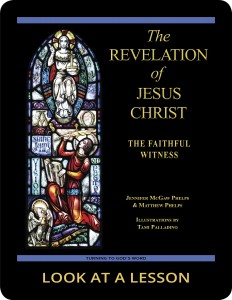sexual immorality
 In the fifth chapter of the First Letter to the Corinthians (NABRE), Paul discusses the topic of sexual immorality, πορνεία (porneia) in Greek. This word appears in the First Letter to the Corinthians more than any other place in the New Testament except the book of Revelation. A proper understanding of the meaning of the word is important to understanding what Paul is trying to convey.
In the fifth chapter of the First Letter to the Corinthians (NABRE), Paul discusses the topic of sexual immorality, πορνεία (porneia) in Greek. This word appears in the First Letter to the Corinthians more than any other place in the New Testament except the book of Revelation. A proper understanding of the meaning of the word is important to understanding what Paul is trying to convey.
πορνεία (Porneia) does not mean immorality in the broad sense. It refers specifically, rather, to sexual immorality. That this is the case is clear even in English as our word pornography derives from Greek pornea and grapho (“I write”).
Here it’s worth noting that ancient Greek has a separate word μοιχάω (moichao) that the New Testament uses when referring specifically to adultery, so it’s fair to assume that pornea is not the same as adultery.
Our biggest clue to the exact meaning of pornea is that it has a secondary meaning of idolatry. This meaning certainly is related to its primary meaning and most likely comes as a result of the sexual practices involved in pagan worship. Among pagans, temple prostitutes and group orgies were a reality. In the pre-Christian lexicon, there’s no indication that pornea had a negative connotation. It merely described sexual practices like those found in pagan worship.
At the time Paul uses pornea in his First Letter to the Corinthians, the denotation or dictionary definition of the word is unchanged; the connotation of pornea, however, has changed from positive to negative. This alteration in connotation likely reflects a change in outlook toward the pagan rituals to which the word pornea is linked. Paul’s use of the word pornea to refer to the behavior of believers is a very strong indictment—one that’s lost if we weakly translate pornea as immorality.
related topics: immorality; lust; sin
you also may like our study of the book of Revelation
 The Revelation of Jesus Christ: The Faithful Witness, a 23-lesson Catholic Bible study with an imprimatur, examines ways in which our traditional Christian view of heaven is built on Hebrew apocalyptic visions recorded in the Old Testament. This recently revised study includes maps and additional commentary and takes a close look at the role of the prophets in present-day Christianity. Illustrations by Tami Palladino depict the often-misunderstood images in the book of Revelation. Click on the book’s cover to view a sample lesson.
The Revelation of Jesus Christ: The Faithful Witness, a 23-lesson Catholic Bible study with an imprimatur, examines ways in which our traditional Christian view of heaven is built on Hebrew apocalyptic visions recorded in the Old Testament. This recently revised study includes maps and additional commentary and takes a close look at the role of the prophets in present-day Christianity. Illustrations by Tami Palladino depict the often-misunderstood images in the book of Revelation. Click on the book’s cover to view a sample lesson.
 Click on the picture of the statue of Moses with horns (above) to learn more about Lost in Translation. A new entry is archived each Monday. Contact us to receive Lost in Translation by email every week. You may use any of the contact links on our website to ask Matthew a question.
Click on the picture of the statue of Moses with horns (above) to learn more about Lost in Translation. A new entry is archived each Monday. Contact us to receive Lost in Translation by email every week. You may use any of the contact links on our website to ask Matthew a question.

Leave a Reply
You must be logged in to post a comment.